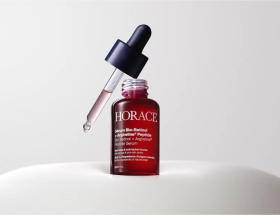
Top 5 tips to reduce scarring after hair transplant procedure
Have you recently undergone a hair transplant? Well, now all you need to do is follow the doctor’s advice religiously to promote the healing process. Even if you have opted for advanced and modern hair transplant techniques like Follicular Unit Extraction (FUE) or Follicular Unit Transplantation (FUT), there can be some scarring. No doubt, it will be much less than the traditional methods but several patients worry about the post-operative scars. Well, if you are stressed, we have got you covered! These pesky scars just need time and care to heal. After all, your scalp just went through a tedious surgical procedure. This comprehensive guide covers the details of minimizing the scars after the procedure. So, without any further delay, let us dive into the main points.
5 Best Tips To Minimise Post-Operative Scars
To ensure low scarring after the hair transplant, you must consider the following pointers.
1、Avoid Using Certain Products
You should avoid certain products that contain harsh ingredients on your head after a hair transplant procedure. The harsh ingredients and acids can have an adverse effect after the procedure by worsening the appearance of the scars on your head. Moreover, you have to avoid using perfumes, bath products, and chemicals as they can irritate the damaged skin after the procedure.
On the contrary, you should try to use gentle formulas that will not irritate the damaged and sensitive skin on your head. Most of the time, the gentle formula will have natural ingredients like aloe vera and oats that will keep the skin moisturised and allow it to repair itself in a proper environment. There are some natural oils that you can use to keep the skin soft. However, you should avoid experimenting and consult with a professional before using anything on your head. Besides all this, you should remember that recovery and appearance of scar will vary from person to person so you should avoid comparing your progress with anyone.
2、Opt For The Right Professional
It is important to opt for the right surgeon or professional for the hair transplant procedure. There are several companies that are offering transplant services in the market. You should conduct proper research and pick a reputable professional to carry out the procedure. Bad scarring often comes with a bad transplant procedure. So, you should take it seriously and go through adequate research to pick the right option that caters to your needs.
Dr Cinik Hair Hospital is a recognised transplant centre that has a professional team of experts who treat thousands of patients on an annual basis. The experts understand the needs of the clients and make sure that all the individuals get the correct services. The team offers high-quality services and strives for maximum patient satisfaction.
3、Avoid Going In Harsh Sunlight
You have to remember that harsh sunlight can worsen the scarring after the hair transplant procedure. So, it is important to protect the damaged skin from harsh sunlight. You can use a sunblock with SPF 30 or higher whenever you go swimming or perform any other activity in the outdoor setting. It will protect the skin from the effects of UV rays.
Clean your skin, protect it from sunlight, and practice good hygiene to ensure a better healing process after the transplant.
4、Opt For Scalp Micropigmentation (SMP) To Cover Scars
Scalp Micropigmentation (SMP) offers a non-surgical solution to camouflage hair transplant scars. By tattooing pigments onto the scalp, SMP creates the illusion of denser hair and conceals scars effectively. This technique provides a natural-looking result and is customisable to match your skin tone and desired hairline.
5、Stay Calm And Patient
Achieving optimal scar improvement requires patience and consistency with recommended treatments. You have to understand that scar reduction is a gradual process, and visible results may take time to emerge. By adhering to post-transplant care instructions and regularly undergoing scar-reducing treatments, you can enhance the appearance of scars over time and achieve a more satisfying outcome.
The Bottom Line
You must have known by now that different modern transplant techniques such as FUT, FUE, and DHI aid in minimising post-operative scars. Under the guidance of an experienced hair transplant surgeon, you will witness minimum to no visible marks which differentiates their discreet procedure from the others. Rest you should follow all post-operative care instructions to ensure there are no issues later. Finally, all micro scars will get covered under the hair so you don’t need to worry a lot about the tiny scars.









